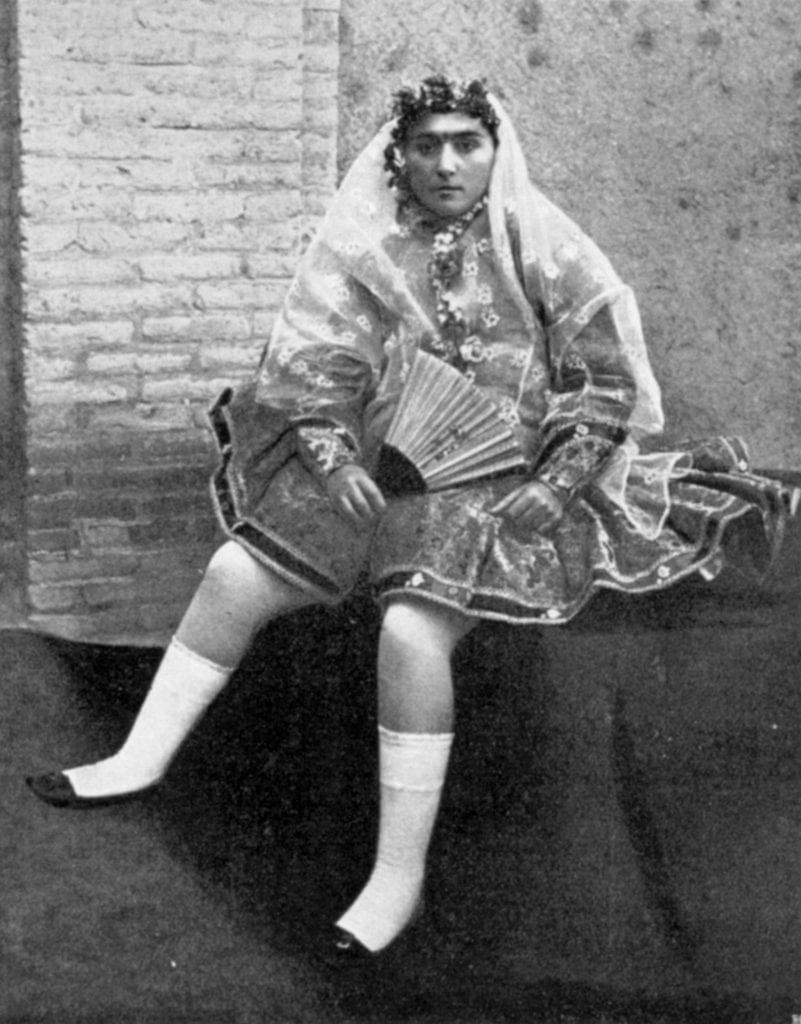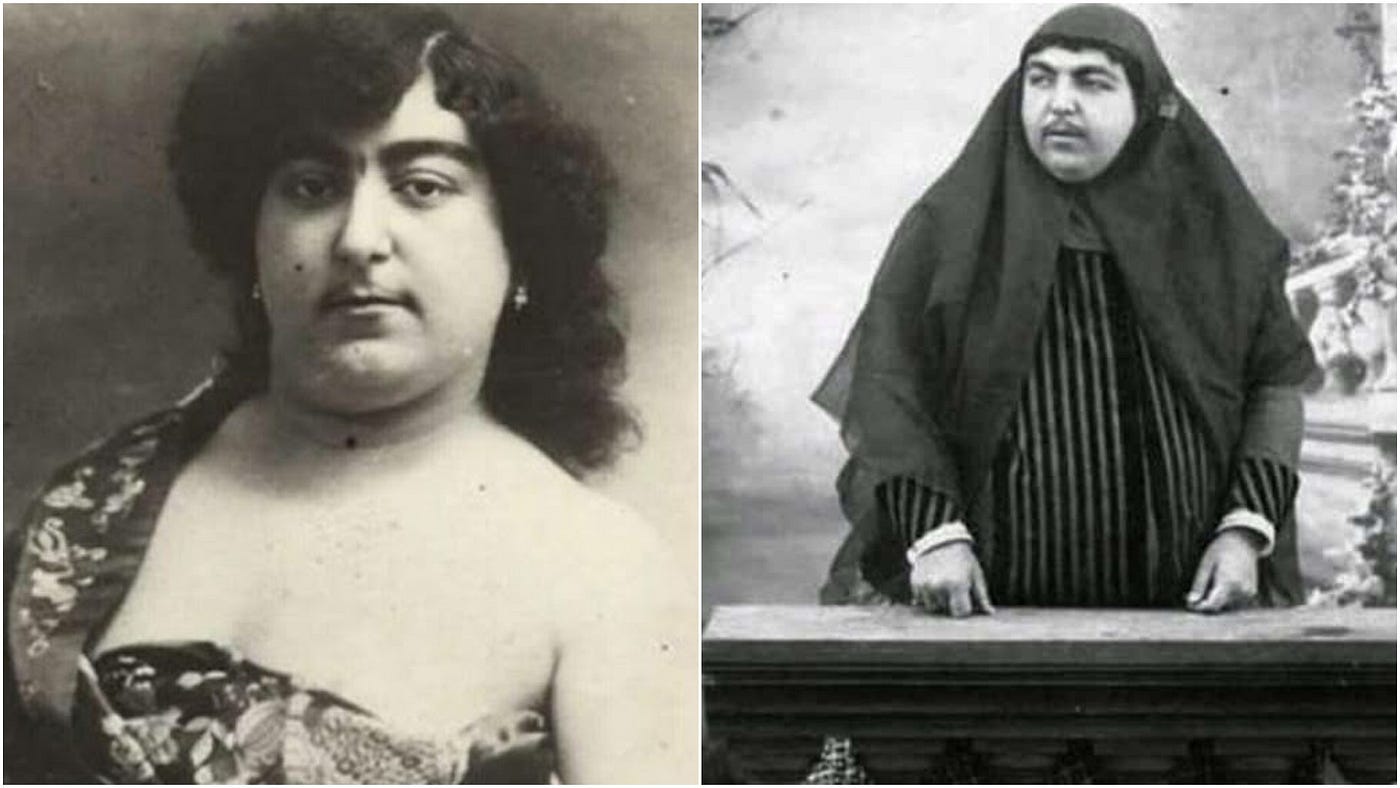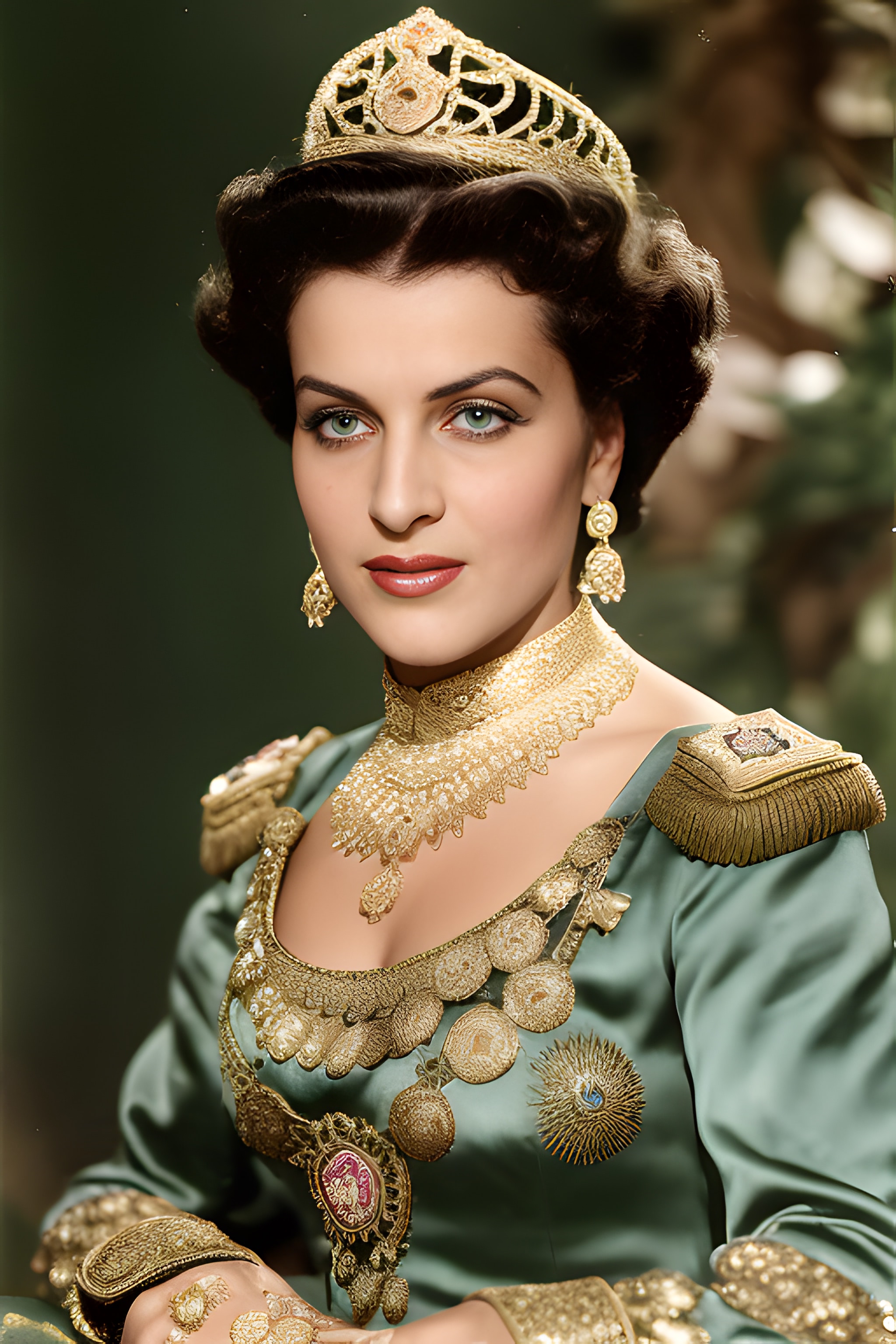The Enduring Allure Of The Iranian Princess: A Journey Through History
The phrase "Iranian Princess" conjures images of ancient empires, opulent palaces, and a rich cultural heritage stretching back millennia. But who exactly is the Iranian Princess? Is she a historical figure, a mythical ideal, or a modern-day symbol? This article delves into the multifaceted identity of the Iranian Princess, exploring her historical significance, cultural impact, and how her legacy continues to resonate in contemporary Iran and beyond. We will navigate through Iran's profound history, from its ancient origins as one of the world's oldest continuous major civilizations to the dramatic shifts of the modern era, understanding how these transformations have shaped the perception of its royal women.
Understanding the "Iranian Princess" requires a deep dive into the very fabric of Iranian identity. It's about more than just a title; it's about the collective ethnolinguistic groups known as Iranian peoples, identified chiefly by their native usage of any of the Iranian languages. These languages are a branch of a larger linguistic family, signifying a shared heritage that has fostered a vibrant civilization. From the grandeur of the Persian Empire of antiquity to the complexities of today, Iran has consistently played a pivotal role in Southwestern Asia, serving as a heartland of culture, innovation, and resilience.
Table of Contents
- Unveiling the Legacy: Who is the Iranian Princess?
- Royal Splendor Through the Ages: The Historical Iranian Princess
- The Cultural Renaissance and Its Royal Patrons
- The Iranian Princess in a Changing World: From Monarchy to Republic
- The Modern Echoes: Perception and Reality
- The Archetype's Enduring Appeal: Symbolism and Storytelling
- A Taste of Iran: Experiencing Its Rich Heritage Today
- Conclusion
Unveiling the Legacy: Who is the Iranian Princess?
When we speak of the "Iranian Princess," it's crucial to understand that we are often referring to an archetype, a historical figure, or a symbol rather than a single, specific modern celebrity. Unlike contemporary figures whose personal data might be readily available, the Iranian Princess embodies the collective experiences and roles of royal women throughout Iran's long and illustrious history. These women, whether from the Achaemenid, Parthian, Sasanian, or Qajar dynasties, played significant, though often understated, roles in shaping the culture, politics, and social fabric of their times. Their stories are interwoven with the grand narrative of Iran itself, a country that is a mountainous, arid, and ethnically diverse nation in Southwestern Asia, serving as the heart of the Persian Empire of antiquity.
Defining Iranian Peoples: A Rich Ethnolinguistic Tapestry
To truly grasp the essence of the Iranian Princess, one must first comprehend the people she represents. Iranian peoples, or Iranic peoples, are the collective ethnolinguistic groups who are identified chiefly by their native usage of any of the Iranian languages, which are a branch of the Indo-Iranian language family. This shared linguistic heritage has fostered a deep cultural connection across diverse groups, from the ancient Persians to the Kurds, Tajiks, and Balochis. This broad definition highlights the rich tapestry of cultures that have contributed to Iran's unique identity, making the concept of an "Iranian Princess" a representation of this diverse yet unified heritage.
Iran's Ancient Roots: A Cradle of Continuous Civilization
Iran is home to one of the world's oldest continuous major civilizations, with historical and urban settlements dating back to 4000 BC. The western part of the Iranian plateau participated in the earliest developments of human civilization, laying the groundwork for the powerful empires that would follow. This deep historical lineage means that the concept of royalty, and by extension, the Iranian Princess, has roots stretching back thousands of years. From the earliest recorded queens and noblewomen to the last empresses, these figures existed within a society that valued tradition, art, and intellectual pursuits, even as it evolved through various political and religious transformations. Most of the country is situated on the Iranian plateau, a geological formation in western and central Asia, except for the coastal regions at the Caspian Sea and the Khuzestan province in the southwest, providing a diverse geographical backdrop to this ancient civilization.
Royal Splendor Through the Ages: The Historical Iranian Princess
Throughout its long history, Iran has been ruled by numerous dynasties, each leaving its indelible mark on the nation's culture and the role of its royal women. The Iranian Princess, in various forms, has been a constant presence, sometimes wielding overt power, at other times influencing through cultural patronage or diplomatic marriages. From the Achaemenid Empire, where figures like Atossa (daughter of Cyrus the Great and wife of Darius I) held significant sway, to the Parthian queens who minted their own coins, royal women were often more than just consorts; they were integral to the political and social landscape.
The Sasanian Era: A Golden Age of Culture and Influence
The Sasanian era (224-651 CE) is often regarded as a golden age of Iranian culture, and it profoundly influenced the concept of the Iranian Princess. During this period, the literature, philosophy, mathematics, medicine, astronomy, and art which blossomed were renewed during the Islamic Golden Age and Iranian Intermezzo. Sasanian princesses and noblewomen were known for their education, their patronage of the arts, and their involvement in court life. Though historical records often focus on male rulers, evidence suggests that royal women played crucial roles in court intrigues, religious affairs, and the transmission of culture. Their elegance and intellectual pursuits became archetypes for future generations, contributing to the enduring image of a sophisticated and influential Iranian Princess.
Women in Power: Beyond the Throne
While direct rule by women was rare, the influence of royal women in Iran extended far beyond merely producing heirs. They often served as regents for young sons, managed vast estates, engaged in charitable works, and were patrons of architecture, art, and literature. Their indirect power was immense, shaping court politics, influencing appointments, and maintaining cultural traditions. For instance, in the Qajar dynasty (1785-1925), princesses like Taj al-Saltaneh were not only figures of beauty but also progressive thinkers who advocated for women's rights and education, challenging traditional norms and leaving a legacy that continues to inspire discussions about women's roles in Iranian society. The concept of the Iranian Princess, therefore, is not just about lineage but also about the subtle and overt ways these women exerted their agency.
| Attribute | Description |
|---|---|
| Historical Periods Represented | Achaemenid, Parthian, Sasanian, Safavid, Qajar Dynasties, among others. |
| Key Roles | Royal Consort, Regent, Cultural Patron, Diplomatic Figure, Estate Manager, Advocate for social causes (later periods). |
| Influence | Shaped court politics, promoted arts and sciences, maintained cultural traditions, influenced succession. |
| Cultural Significance | Embodied beauty, sophistication, and often, intellectual prowess. Inspiration for literature and art. |
| Legacy | Contributed to the enduring image of Iranian elegance, resilience, and cultural depth. |
The Cultural Renaissance and Its Royal Patrons
The concept of the Iranian Princess is inextricably linked to Iran's profound cultural achievements. An Iranian cultural renaissance in the late 8th century led to a reawakening of Persian literary culture, though the Persian language was now highly Arabized and in Arabic script. This period, often overlapping with the Islamic Golden Age and the Iranian Intermezzo, saw a resurgence of scholarship, poetry, and art. Royal women, including princesses, often played a crucial role as patrons of these intellectual and artistic endeavors. They commissioned poets, funded scholars, and supported the construction of magnificent mosques, gardens, and palaces, thereby directly contributing to the blossoming of Iranian civilization. This patronage was vital in preserving and evolving Iran's unique cultural identity, ensuring that the legacy of the Iranian Princess was intertwined with the nation's artistic and intellectual flourishing.
The Iranian Princess in a Changing World: From Monarchy to Republic
The 20th century brought unprecedented change to Iran, culminating in the dramatic transformation of its political landscape. The Pahlavi dynasty, which ruled from 1925 to 1979, saw a modernization drive that significantly altered the role and public perception of royal women. Empress Farah Pahlavi, for instance, became a prominent public figure, engaging in extensive cultural and social work, embodying a modern vision of the Iranian Princess. However, this era of monarchy came to an abrupt end with the Islamic Revolution.
The Islamic Revolution and Its Transformative Impact
The Iranian government was changed to an Islamic Republic by the Islamic Revolution in 1979. This seismic shift fundamentally altered the country's governance, society, and the very concept of royalty. Soon afterwards, the Iranian Students Movement (Tahkim Vahdat), with the backing of the new government, took actions that symbolized the profound break from the monarchical past, including the seizure of embassy personnel on November 4, 1979, labeling the embassy a den of spies. The revolution was widely supported, with over 98 percent of Iranians supporting an Islamic Republic, signaling a clear mandate for change. This transformation meant the formal end of the monarchy and, with it, the traditional role of the Iranian Princess as a figure of state. The symbols of royalty were largely dismantled, and a new identity, rooted in Islamic principles, emerged.
The Modern Echoes: Perception and Reality
In contemporary Iran, the term "Iranian Princess" might evoke different meanings depending on who you ask. For some, it represents a nostalgic link to a bygone era of perceived grandeur and cultural sophistication. For others, it might be a symbol of the monarchy that was overthrown, a reminder of a past that is seen through a critical lens. The perception of the Iranian Princess today is often filtered through the lens of current events and geopolitical realities. In phone interviews, people in Iran voiced fear, sorrow, and grief after waking up to the news of strikes on the country’s nuclear facilities, highlighting the anxieties that shape daily life. These modern struggles and geopolitical tensions, such as Israeli airstrikes in Iran, where Iranian families mourn lost relatives and shattered homes, inevitably influence how historical figures and symbols are viewed.
Navigating Contemporary Challenges and Global Perspectives
The narrative around Iran today is complex, often dominated by headlines about politics, nuclear facilities, and regional conflicts. View the latest Iran news and videos, including politics news headlines, and you'll find discussions about the US entering Israel's war on Iran after attacking three nuclear sites. These events create a challenging environment for any discussion of Iran's historical figures, including the Iranian Princess. While life in Tel Aviv returns to normal while a ceasefire between Israel and Iran holds, hundreds of thousands mourn top Iranian military commanders and scientists killed in Israeli strikes. Iranian Kurdish opposition groups also express their views on the war on Iran. This volatile backdrop means that the legacy of the Iranian Princess is often discussed in the context of a nation grappling with its identity, its past, and its place in the world. Yet, despite these challenges, the cultural richness that the Iranian Princess once symbolized continues to thrive in various forms.
The Archetype's Enduring Appeal: Symbolism and Storytelling
Despite the dramatic political shifts, the archetype of the Iranian Princess continues to hold a powerful allure, both within Iran and globally. She remains a symbol of beauty, resilience, and a connection to an ancient and glorious past. In literature, art, and popular culture, the image of the Iranian Princess often represents the sophisticated and artistic heritage of Persia. She embodies tales of courage, love, intrigue, and sometimes, tragedy. This enduring appeal lies in her ability to transcend specific historical figures and become a representation of Iranian womanhood – strong, cultured, and deeply rooted in a civilization that has contributed immensely to human knowledge and aesthetics. The Iranian Princess, as an idea, continues to inspire storytelling and artistic expression, reflecting a collective memory of a time when Iran's royal courts were centers of unparalleled cultural brilliance.
A Taste of Iran: Experiencing Its Rich Heritage Today
Beyond historical figures and political narratives, the rich heritage associated with the Iranian Princess can be experienced in the vibrant culture of modern Iran. This culture is alive in its art, music, poetry, and, notably, its cuisine. Visitors and locals alike can find "really delicious and authentic Iranian food and friendly staff," with dishes like Gheymeh being a must-try. This culinary experience is just one facet of a culture that continues to thrive, reflecting the deep historical roots and continuous civilization that Iran represents. The hospitality, the intricate patterns of Persian carpets, the haunting melodies of traditional music, and the profound wisdom of its poets all echo the legacy that figures like the Iranian Princess helped to cultivate and preserve. It is a testament to the resilience and richness of Iranian culture that, despite centuries of change, its core essence remains vibrant and inviting.
Conclusion
The "Iranian Princess" is far more than a simple historical title; she is a powerful archetype, embodying the rich tapestry of Iran's ancient past, its profound cultural achievements, and the evolving role of women within its society. From the intellectual flourishing of the Sasanian era to the dramatic transformations brought by the Islamic Revolution, the concept of the Iranian Princess has adapted, remaining a symbol of beauty, resilience, and a deep connection to one of the world's oldest continuous civilizations. Her legacy is not just found in history books but also in the enduring cultural expressions of modern Iran, from its exquisite art to its authentic cuisine.
We hope this journey through the history and symbolism of the Iranian Princess has offered you a deeper appreciation for Iran's remarkable heritage. What aspects of Iranian history or culture fascinate you the most? Share your thoughts in the comments below, or explore more of our articles to uncover further insights into the diverse narratives that shape our world.

The untold truth of a beauty symbol of Persia - Princess Qajar

Princess Taj al-Saltaneh — A Symbol of Beauty in the 19th Century Iran

Portrait of an Iranian princess • VIARAMI